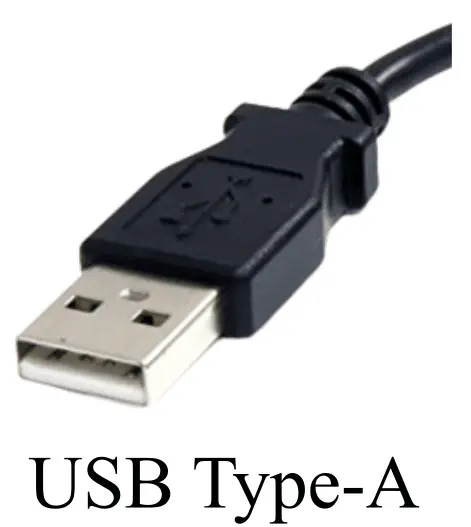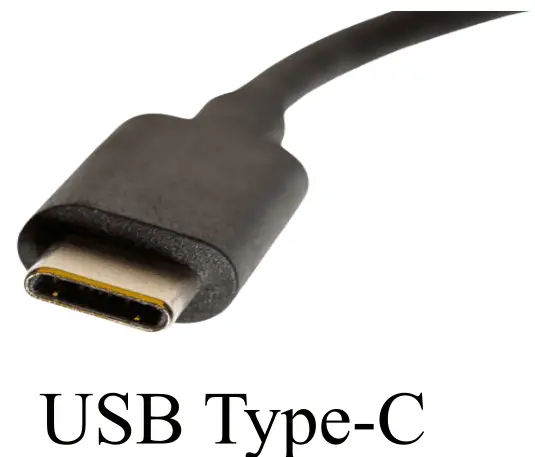In this article, we will discuss the key differences between USB-A and USB-C. But before that let us first know a bit about USB, USB-A, and USB-C individually.
What is USB?
USB is the acronym for Universal Serial Bus. USB is one of the most widely used connection interfaces in electronic devices like computers, smartphones, etc. It is so popular because of its plug-and-play feature. For this reason, it is very common in almost every gadget. However, USB is primarily intended for short-distance communication, such as connecting computer peripherals like keyboards, mouse, printers, scanners, smartphones, etc. These days, USB is used for device charging as well as data transfer. To date, several versions of USBs have been developed such as USB-A, USB-B, USB-C, etc.
What is USB-A?
USB-A is a type of USB connection interface that has a rectangular shape and is the most common type of USB. Sometimes, USB-A is also called Traditional USB or Standard-A USB.

USB-A can be seen in almost every electronic device like computers, laptops, smart TVs, CD/DVD players, etc. USB-A is basically a standard plug-and-play interface used for cables and connectors to establish communication between electronic devices. This type of USB is very commonly found in keyboards, mouse, cameras, external HDD/SSD, etc. This port is also found in changing cables and adapters of smartphones and laptops.
What is USB-C?

USB-C is a modern type of USB interface that appears in a square shape. USB-C is becoming popular in the latest consumer devices, thus almost every latest smartphone, tablet, or laptop has a USB-C connector. USB-C is developed to overcome several issues associated with USB-A. USB-C is much smaller and thinner in size as compared to USB-A. Also, it has a symmetrical design, therefore, we can insert it from both sides. USB-C enables fast charging and super-speed data transfer.
Now, let us discuss the differences between USB-A and USB-C.
Differences between USB-A and USB-C
The key differences between USB-A and USB-C are listed in the following table:
| Key | USB-A | USB-C |
| Description | USB-A is a traditional type of UBS connector that has a thin, rectangular shape and is mainly used for the host end of the connections. | USB-C is a modern type of USB connector that has a rotationally symmetrical USB connector and is used in all the latest consumer devices. |
| Number of pins | USB-A has 4 pins USB connector. | USB-C has a 24 pins USB connector. |
| Release date | USB-A was first released in the year of 1996. | USB-C was first released in 2014 |
| Physical size | USB-A is larger in physical size. | USB-C has a smaller physical size. |
| Plug-in reversibility | USB-A cannot be plugged-in reversible order. | USB-C can be reversibly inserted in plugs. |
| Power output | USB-A provides low power output. | USB-C provides a relatively high power output. |
| Use | USB-A is primarily used in the host end of the devices such as in charger adapters. | USB-C is mainly used in consumer devices like laptops, smartphones, etc. |
| Rotational symmetry | USB-A does not have rotational symmetry, hence before inserting it into the port it should be checked for direction. | USB-C has rotational symmetry, thus it can be inserted on both sides, up and downsides, which makes its wrong connection impossible. |
| Appearance | USB-A appears wider. | USB-C appears thinner. |
| Rate of data transfer | USB-A offers slow data transfer. | USB-C offers fast data transfer. |
| Cost | The cost of USB-A is low. | USB-C is comparatively more expensive. |
Conclusion
Hence, this is all about the differences between USB-A and USB-C. Both are the industry standard USB interface used for digital communication among devices like computers, smartphones, laptops, etc. The one most significant notable difference between USB-A and USB-C is that USB-A is a large-size USB connector that can be plugged in a specific manner, on the other hand, USB-C is a small-size USB connector that offers a reversible plug-in facility.